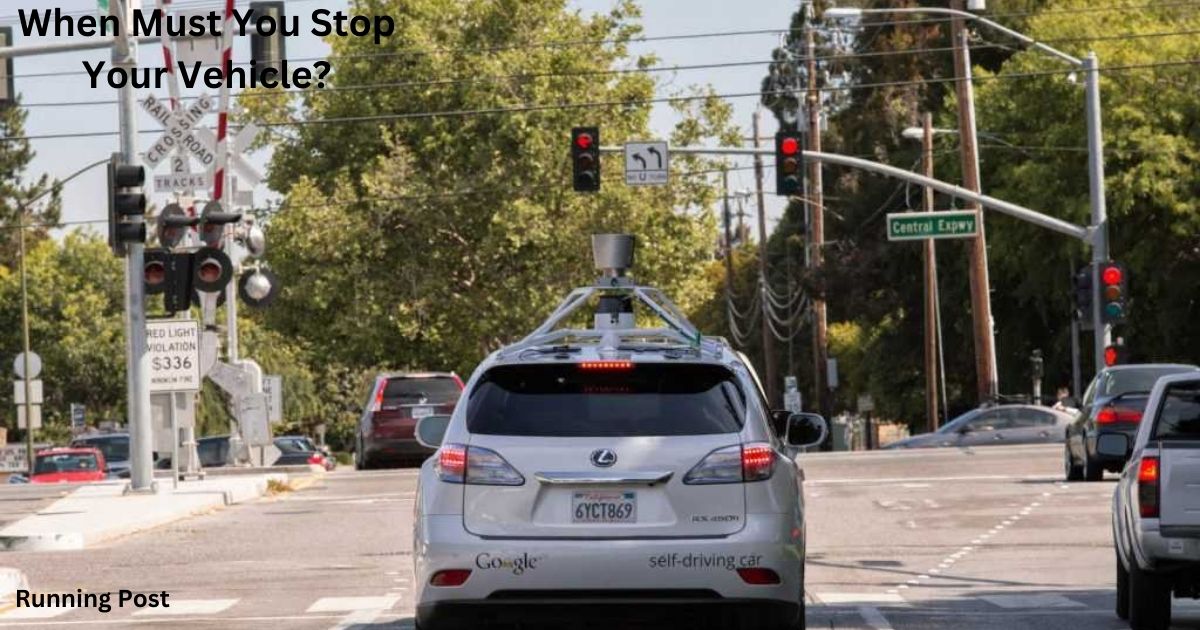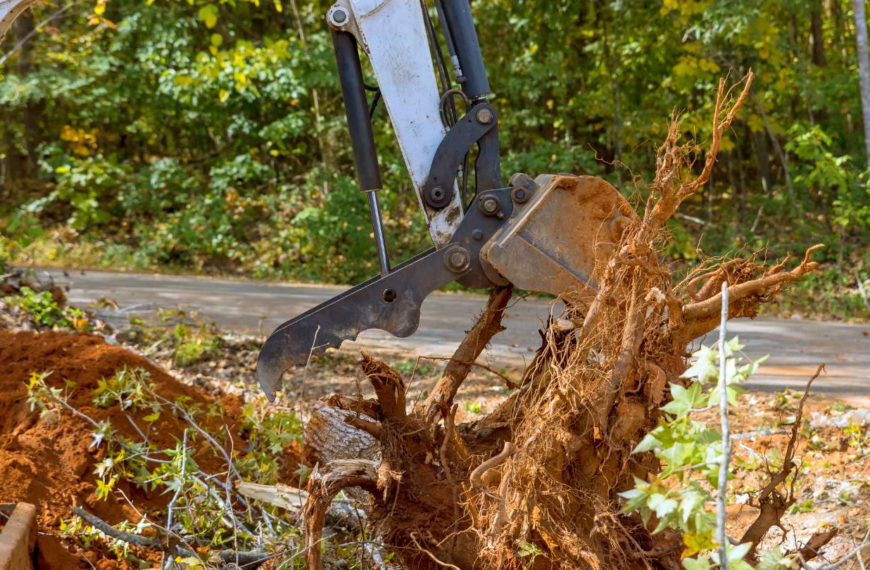| A: Only When You See a Stop Sign | B: You Should Only Stop When You Feel Like It | C: If you’re involved in an incident that causes damage or injury | D: Before merging onto a motorway |
Understanding When You Must Stop Your Vehicle
When Must You Stop Your Vehicle? Stopping your vehicle is one of the most fundamental aspects of safe driving. Whether it’s adhering to traffic laws, responding to emergencies, or ensuring the safety of pedestrians and other drivers, knowing when to stop your vehicle is crucial. This knowledge not only keeps you within legal bounds but also plays a significant role in preventing accidents.
In the UK, various situations require drivers to stop their vehicles, each with its own legal and safety implications. Understanding these situations ensures you’re prepared to act correctly when the need arises. It’s also important to recognize how different factors, such as speed and road conditions, affect your stopping time. This understanding can help you anticipate when to begin slowing down, reducing the likelihood of sudden, unsafe stops.
The following sections will delve into the details of when you must stop your vehicle in the UK, how to do it safely, and what considerations to keep in mind as you slow down. We’ll explore the legal obligations, best practices for stopping, and the key takeaways that every driver should be aware of. Additionally, we’ll touch on a related aspect of driving, specifically where you may overtake on a one-way street, and how it ties into stopping and slowing down your vehicle.
What is the Stopping Time of a Vehicle?
Stopping time refers to the total time it takes for a vehicle to come to a complete halt after the driver has recognized the need to stop. This time is a combination of the driver’s reaction time and the braking time. Understanding stopping time is crucial for safe driving, as it allows drivers to anticipate when and how to begin slowing down to avoid accidents or comply with traffic regulations.
Factors Affecting Stopping Time
Stopping time isn’t a fixed measure; it varies based on several factors. Some of the primary factors affecting stopping time include:
- Speed of the Vehicle: The faster a vehicle is moving, the longer it will take to stop. The relationship between speed and stopping distance is exponential, meaning that a small increase in speed can result in a significantly longer stopping distance.
- Road Conditions: Wet, icy, or uneven roads can drastically increase stopping time. These conditions reduce the friction between the tires and the road surface, making it harder for the vehicle to slow down and stop.
- Vehicle Condition: The condition of the vehicle’s brakes, tires, and overall maintenance can impact stopping time. Worn-out brakes or tires with low tread depth can lead to longer stopping distances.
The Formula for Stopping Distance
Stopping distance is often broken down into two components: thinking distance and braking distance.
- Thinking Distance: This is the distance your vehicle travels during the time it takes for you to recognize a hazard and decide to apply the brakes. It’s influenced by factors such as your reaction time, which can vary based on fatigue, distraction, or impairment.
- Braking Distance: This is the distance your vehicle travels after the brakes are applied. Braking distance depends on factors like the vehicle’s speed, road conditions, and the effectiveness of the brakes.
The formula to calculate stopping distance is:
Stopping Distance = Thinking Distance + Braking Distance
Understanding this formula helps drivers make better decisions when it comes to maintaining safe following distances and knowing when to begin slowing down. For example, if you’re considering where you may overtake on a one-way street, knowing your stopping distance is crucial. It ensures that you have enough space to safely overtake without causing a hazard.
When Must You Stop Your Vehicle in the UK?
In the UK, there are specific legal requirements and situations where stopping your vehicle is mandatory. Failure to adhere to these rules can result in fines, penalty points on your license, or even more severe legal consequences.
Legal Obligations
As a driver, you must stop your vehicle in several situations to comply with the law:
- Stopping at Red Lights and Stop Signs: It’s mandatory to stop at all red traffic lights and stop signs. Failing to do so not only puts you at risk of a collision but also violates traffic laws.
- Stopping for Pedestrians at Crosswalks: Pedestrians have the right of way at designated crosswalks. You must stop your vehicle to allow them to cross safely.
- Stopping for Emergency Vehicles: When an emergency vehicle with flashing lights approaches, you are required to pull over and stop to allow it to pass.
These legal obligations are in place to ensure the safety of all road users. Ignoring them can lead to accidents and legal repercussions. Moreover, understanding where you may overtake on a one-way street also plays a role in adhering to these laws. For example, you must not overtake if it requires you to pass through a red light or obstruct a pedestrian crossing.
Mandatory Stops
There are specific situations where stopping your vehicle is not just a matter of following traffic rules but a legal requirement under UK law:
- If You’re Involved in an Incident that Causes Damage or Injury: If you’re involved in an accident that results in injury or damage to another vehicle, person, or property, you must stop your vehicle immediately. Failing to do so is a criminal offense known as “hit and run.”
- At the Scene of an Accident to Exchange Information: After stopping, you must provide your name, address, and insurance details to the other parties involved. If you’re unable to provide this information at the scene, you must report the incident to the police within 24 hours.
- When Signaled by a Police Officer or Traffic Warden: If a police officer or traffic warden signals for you to stop, you are legally obligated to comply immediately.
These mandatory stops are critical to maintaining safety and order on the roads. Knowing when you must stop your vehicle, particularly in these situations, helps prevent further harm and ensures that all parties involved in an incident can receive the necessary assistance.
How Should You Stop Your Car?

Stopping your car may seem straightforward, but doing it safely and correctly requires attention to detail. Proper stopping techniques help prevent accidents, ensure the safety of all road users, and prolong the life of your vehicle.
Best Practices for Safe Stopping
To stop your vehicle safely, follow these best practices:
- Using Mirrors and Signals Before Stopping: Before you stop, check your mirrors to be aware of other vehicles around you. Use your indicators to signal your intention to stop, giving other drivers time to react.
- Gradual Deceleration to Avoid Sudden Stops: Sudden stops can cause accidents, especially if the vehicle behind you is following too closely. Gradually reduce your speed before coming to a stop to avoid catching other drivers off guard.
- Positioning Your Vehicle Correctly on the Road: When stopping, make sure your vehicle is in the correct position, such as to the side of the road or in a designated stopping area. This helps keep traffic flowing smoothly and prevents obstruction.
Emergency Stops
Emergency situations may require you to stop your vehicle suddenly. Knowing how to perform an emergency stop is essential:
- How to Perform an Emergency Stop: In an emergency, you need to stop as quickly as possible. Apply firm pressure to the brake pedal without locking the wheels. In modern vehicles with ABS (Anti-lock Braking System), the brakes will automatically prevent wheel lockup, allowing you to maintain control of the vehicle.
- Importance of Maintaining Control During Sudden Stops: Keeping control during an emergency stop is crucial to avoid collisions. Ensure you’re holding the steering wheel firmly and keep your vehicle in a straight line to prevent skidding.
Knowing how to execute both standard and emergency stops is vital for safe driving. It’s also relevant when considering where you may overtake on a one-way street, as you must be able to stop safely if the situation requires it.
You Also Like It:
Where Would It Be Unsafe to Overtake?
What’s Most Likely to Waste Fuel?
What can fitting chains to your wheels help to prevent?
What Should You Do When Slowing Down?
Slowing down is a critical precursor to stopping, and how you do it can significantly impact your safety and the safety of others on the road. Proper slowing down techniques ensure smooth traffic flow and prevent accidents.
Preparing to Stop
When you anticipate the need to stop, take the following steps to prepare:
- Reducing Speed Gradually: Start slowing down well before you reach the stopping point. This gives you more control over your vehicle and reduces the risk of sudden stops.
- Communicating with Other Drivers Through Signals: Use your brake lights and indicators to signal your intentions to other drivers. This communication helps them adjust their speed and distance accordingly.
- Checking Your Surroundings for Hazards: Before slowing down, scan the road ahead and around you for potential hazards, such as pedestrians, cyclists, or vehicles merging into your lane.
Avoiding Harsh Braking
Harsh braking can lead to skidding, loss of control, and unnecessary wear on your vehicle. To avoid harsh braking:
- How to Maintain Smooth Control: Apply the brakes gently and progressively. If you need to stop quickly, increase the pressure on the brake pedal gradually to avoid locking the wheels.
- The Impact of Harsh Braking on Vehicle Wear and Tear: Frequent harsh braking can cause excessive wear on your brake pads and tires, leading to higher maintenance costs and reduced vehicle performance.
Understanding how to slow down effectively is essential for safe driving. It’s particularly important in situations where you may overtake on a one-way street, as you need to ensure that you can reduce speed smoothly without disrupting the flow of traffic.
Key Takeaways: Safe Stopping Practices
To conclude, stopping your vehicle safely is a critical aspect of driving that requires knowledge, awareness, and practice. Here are the key takeaways:
Summary of Legal Requirements
- Always stop at red lights, stop signs, and for pedestrians at crosswalks.
- Stop immediately if you’re involved in an incident that causes damage or injury.
- Comply with signals from police officers or traffic wardens.
Tips for Reducing Stopping Distance
- Maintain your vehicle’s brakes and tires in good condition.
- Adjust your speed according to road and weather conditions.
- Keep a safe following distance from the vehicle in front of you.
Importance of Awareness and Control
- Use your mirrors and signals before stopping or slowing down.
- Avoid harsh braking to maintain control and prevent accidents.
- Always be aware of your surroundings, especially in complex driving scenarios like overtaking on a one-way street.
By following these guidelines, you can ensure that you stop your vehicle safely and legally in any situation.
You Also Like It:
What does fuel-efficient driving achieve?
Releated Posts
MAB Instructor Certification: Your Gateway to Professional Crisis Management Leadership
In today’s fast-evolving professional environments—especially in healthcare, mental health, education, and corrections—conflict and aggression can arise without warning.…
Freewayget.com: Your Ultimate Platform for Deals, Discounts, and Digital Products
Introduction to Freewayget.com In today’s fast-paced digital world, finding reliable platforms that offer authentic discounts, deals, and digital…
Affordable & Fast Embroidery Digitizing Services in Your Area
Embroidery digitizing services provide corporations, designers, and people with brilliant embroidery-equipped designs by means of changing art work…
Introduction to hdhub4u nit
In this article, we will delve into the details of hdhub4u nit, exploring its features, benefits, and why…

















